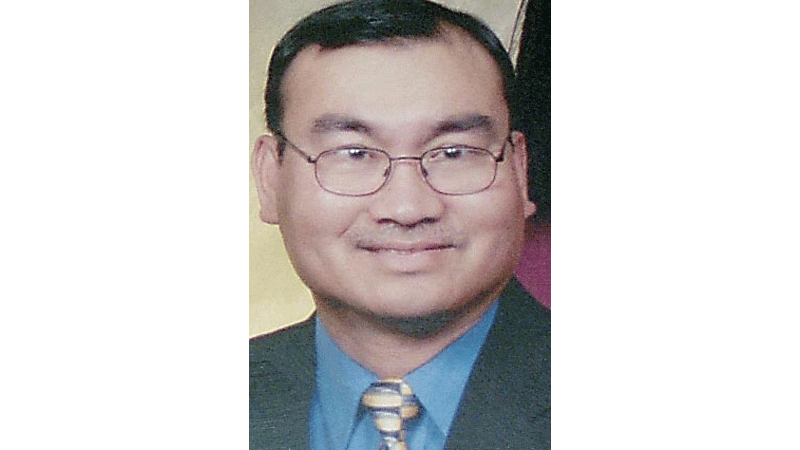COLUMN: Proposed fund for victims, families is vital but lamentable
Published 4:59 pm Wednesday, February 8, 2023
|
Getting your Trinity Audio player ready...
|
By Roger Chesley
Virginia Mercury
Victims of large-scale violent attacks, as well as family members of those killed, may soon get financial help to pay for long-term medical and psychological care in the commonwealth. The aid would include out-of-pocket expenses not covered by insurance.
Gov. Glenn Youngkin recently signaled support for creating the Virginia Mass Violence Care Fund, pledging $10 million through proposed budget amendments. The nonreverting fund would earn interest, and beneficiaries could tap into money three years after a major shooting, stabbing or car intentionally ramming into protesters. Officials say donations and health insurance tend to dry up by that time.
Money in the state fund would be invested in the market, similar to what happens with the Virginia 529 college plan.
This is a proactive, vital resource – perhaps the first of its kind nationwide, officials say. Yet acknowledging the need for such a fund is so … dispiriting.
With all of our memorials, candlelight vigils and other gestures of hope following mass shootings, we’ve been getting better and better at providing comfort and support.
Preventing such awful, mindless attacks, almost always by gunfire, is another story.
First things first:
Kudos to the guv and folks like Joe Samaha, director of victims advocacy for the VTV Family Outreach Foundation/VTV Care, who worked to create it. Samaha’s daughter Reema was one of the people slain during the shooting massacre at Virginia Tech in 2007; 32 people were killed, and dozens were injured. It remains the deadliest school shooting in the country.
“Trauma is not linear,” Samaha told me this week. “You don’t just get better. It takes time, it takes treatment.”
State Sen. Chap Petersen, D-Fairfax, credited Samaha, his constituent, with doing “the spade work” in bringing the fund close to fruition.
“We know there will be incidents over the next decade where multiple numbers of people will be killed,” Petersen told me. That’s a haunting gut punch to all Virginians.
Youngkin spokeswoman Macaulay Porter said by email the fund “is in response to recent mass violence events in the state, including at U.Va. and the Walmart in Chesapeake.”
At the University of Virginia, police say a student fatally shot three football players and injured two other students on a bus following a class trip to Washington in November. The very next week, a manager at a Chesapeake Walmart shot and executed six coworkers, wounded others and then killed himself.
With so many guns in circulation and so many grudges – real and imagined – harbored by individuals, law enforcement agencies face an oft-impossible task of ferreting out who will go off, and who’s merely a menace. That’s why so many Americans favor tougher gun-control laws.
One grim question arose almost immediately, at least for me, about the proposed fund: How do you define “mass violence”? Do you count the number of slain and wounded? Do you have a cutoff? Does the crime have to be in public and in view of bystanders?
I had trouble getting a straight answer.
The Gun Violence Archive, a D.C.-based nonprofit, for example, defines a mass shooting as four or more people shot or killed, not including the shooter.
Samaha said his organization proposes copying the definition of mass violence used by the federal Office of Victims of Crime in the U.S. Department of Justice. (My messages to spokespersons there weren’t returned.)
Samaha noted guidelines under the federal Antiterrorism and Emergency Assistance Program define an act of mass violence as “an intentional violent crime that results in physical, emotional, or psychological injury to a sufficiently large number of people and significantly increases the burden of victim assistance and compensation for the responding jurisdiction.”
This is more than just a rhetorical exercise. No one wants the proposed fund to be drained quickly. Virginia, though, has its share of crimes where many families are left with grief, haunting recollections from witnessing murders and huge medical bills for survivors.
Here are just two cases I’ve reported on over the past 15 months:
In late 2021, authorities arrested a man who they say shot dead three women and wounded two others at a Norfolk public housing community. Police cited domestic violence as the motive (one of the wounded women had dated the suspect). A dozen children were playing nearby as the gunfire erupted.
Last year, Sierra Jenkins, a 25-year-old Virginian-Pilot reporter, and two other people were shot dead while leaving a restaurant-bar in downtown Norfolk. Two others were injured. Then-Police Chief Larry Boone said the shooting reportedly stemmed from an argument over a spilled drink inside the restaurant. Jenkins was caught in the crossfire.
Virginia does have resources currently for victims of violence. In December, for example, the Criminal Justice Services Board approved $20 million for several police- and victim-related efforts, Porter said. The money included $5 million for a program to provide services to victims of violent crime in hospitals, with the goal of reducing future violence-related injuries and homicides.
The proposed “mass violence” fund would help people impacted by large-scale shootings and other crimes. Victims and families from the 2019 rampage at the Virginia Beach Municipal Center, for instance, would be among the first to likely qualify for reimbursements.
I pray the proposed fund, because of possible future carnage, will never be needed.
I’ll despair when such violence eventually happens.
ROGER CHESLEY, a longtime columnist and editorial writer, worked at the (Newport News) Daily Press and The (Norfolk) Virginian-Pilot from 1997 through 2018. He previously worked at newspapers in Cherry Hill, N.J., and Detroit. Reach him at rchesley@virginiamercury.com.





